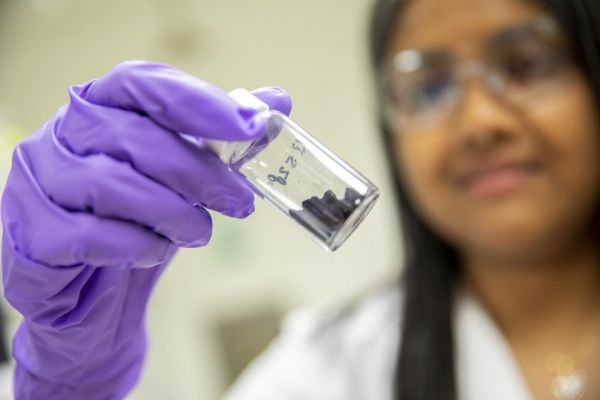Often, the findings of fundamental scientific research are many steps away from a product that can be immediately brought to the public. But every once in a while, opportunity makes an early appearance.
Such was the case for a team from the Department of Energy’s Joint BioEnergy Institute (JBEI), whose outside-the-box thinking when investigating microbe-based biomanufacturing led straight to an eco-friendly production platform for a blue pigment called indigoidine. With a similar vividly saturated hue as synthetic indigo, a dye used around the world to color denim and many other items, the team’s fungi-produced indigoidine could provide an alternative to a largely environmentally unfriendly process.
“Originally extracted from plants, most indigo used today is synthesized,” said lead researcher Aindrila Mukhopadhyay, who directs the Host Engineering team at JBEI. “These processes are efficient and inexpensive, but they often require toxic chemicals and generate a lot of dangerous waste. With our work we now have a way to efficiently produce a blue pigment that uses inexpensive, sustainable carbon sources instead of harsh precursors. And so far, the platform checks many of the boxes in its promise to be scaled-up for commercial markets.”
Read more at DOE/Lawrence Berkeley National Laboratory
Image: Lead researcher Aindrila Mukhopadhyay holds a vial of purified indigoidine crystals. (Credit: Marilyn Chung/Berkeley Lab)


